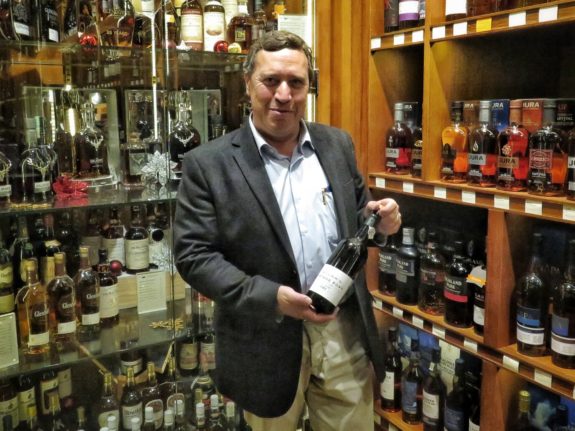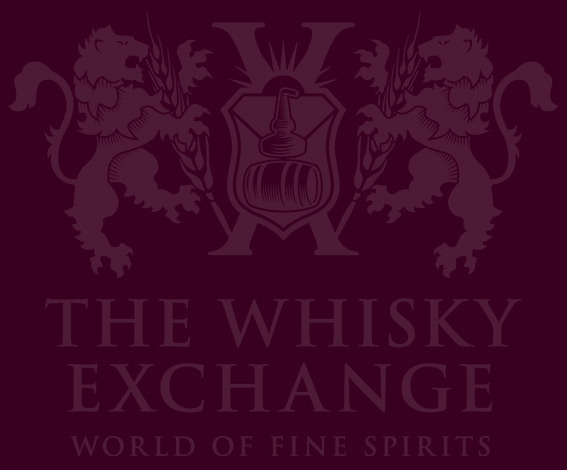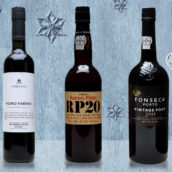One summer, years ago, in the early days of my obsession with drinks, I went away for a long weekend in Portugal and came back a changed man: a few summery days in Porto are enough to convert almost anyone to the delights of the country’s national drink. As I write, it’s the middle of the afternoon and it’s dark outside. The street lights are on, the sleet has subsided and my thoughts turn to warming drinks: it’s time for some port.

David Guimaraens: master blender for The Fladgate Partnership and my port guru
While we covered the basics in a previous post, pulling apart port’s intricacies and flavours takes time and effort. Fortunately, I recently met David Guimaraens, the richly voiced master blender for The Fladgate Partnership, one of the most respected producers of port, and makers of Taylor’s, Fonseca and Croft. David has grown up surrounded by wine, but his love of drinks doesn’t end there – he’s also a whisky fan. While that is useful when whisky makers come to visit him in Portugal, looking for casks, it also let him break down port in a way that makes sense to me: in terms of whisky.
In the world of port, when it comes to long-aged wines there are two broad styles that David focused on. The top of the pile when it comes to port: vintage and tawny.
Tawny port

The Taylors cellars
‘Tawny ports are created, like with many whiskies, by the art of the blender. It will be the blender who takes a young port made at the harvest, and will guide it throughout its life to gain the characteristics that the blender chooses’
David Guimaraens
Almost every whisky that you drink is a mixture of spirit from different casks – a vatting. Somewhere, a blender has selected whiskies that have been cared for during their life to create a certain character. The casks are combined and the final whisky is created, reflecting the wishes of the blender.
Tawny ports come from the same school of thought. Each run of spirit from a whisky distillery will be slightly different, but the variation in wines from harvest to harvest will be even greater. The blender selects and nurtures the wines from an early age, cross blending casks as they age, reracking the wine into different casks, and moving the casks around the warehouse, all to create the flavours that are needed.
When it finally comes to the moment where a new vatting must be created, the blender will use the palate of casks that they have created to build the wine. Like with most whiskies, the intention is not to create something different and new, but instead to carry on and produce something as close to the previous release as possible: when you go back to a bottle of Taylor’s 20 Year Old tawny port, you want it to taste like the last one you had, just the same as when you open a new bottle of Glenmorangie Quinta Ruban.
Consistency: the watchword of both vatted whiskies and tawny ports.
Vintage port

Bottles of vintage Fonseca port, waiting for their time to be opened
‘When a blender bottles a tawny port they have complete control; vintage port is a whole different world. Making a vintage port is all about the skill we have in our vineyards, the skill that we have in transforming the grapes that we grow into great-quality young ports, and the skill of putting together a blend of only the best young ports. Once the vintage port is bottled, two years after the harvest, it becomes a time capsule. It will have the potential to age for a lifetime, but once it’s in the bottle, for good or for bad, you have committed to the decisions that you have taken’
David Guimaraens
Unlike tawny port, where the wine matures in casks and the blender can monitor and tweak the process along the way, vintage ports are a matter of faith. Bottled two years after the harvest, they are created to age and mature for years, but the work to create the flavours that will develop over their lifetime is done all before the cork is driven.
There’s nothing quite like them in the whisky world. They are the smallest and most restrictively produced ‘single casks’ I have ever seen. Each bottle is able to age on its own terms, before being opened and drunk. And they need to be drunk quickly after opening – days are enough to kill their flavour. Each is, as David says, a time capsule.
What to drink?
Since my trip to Porto, I have been focused on the world of tawny ports. The ageing in casks and long interaction with the air create flavours that match up easily with whisky, and fit the shape of my palate. But after a short time talking to David and seeing his love of vintage ports, it is the vintages to which I now turn.
The skill it takes to create the initial conditions that will create something incredible after decades in a bottle with little opportunity for interference are staggering. Fortunately, the wines live up to the effort and faith of their creators. Time to lay down some bottles for the future…
You can find David Guimaraens’s creations (and some of his father’s, the former master blender) on our Taylor’s, Fonseca and Croft pages, and also a wide range of wines on our port page.










 Enjoy responsibly
Enjoy responsibly
Comments
[…] winemaker David Guimarens at a tasting in our Covent Garden shop – you can read about it here: Port and Whisky. I’ve been a big port fan for years, but recently I’ve found my interest waning. Ten […]